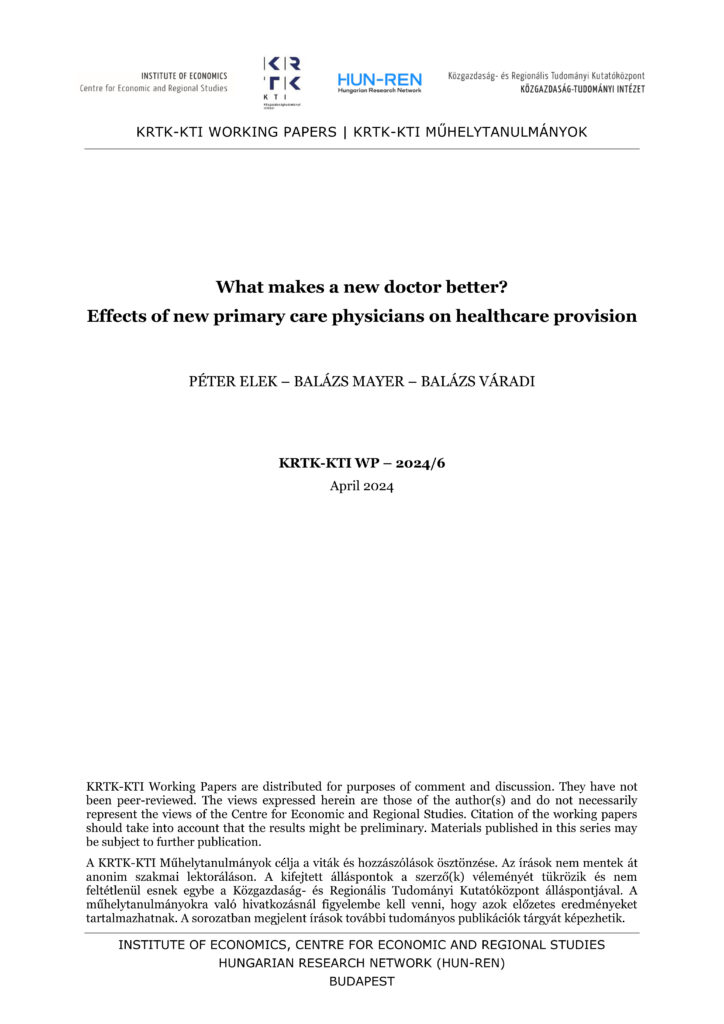Using individual-level administrative panel data of all diabetic patients in Hungary for years 2010-2017, we analyze the effects of primary care characteristics on healthcare provision in rural areas by exploiting the change of the person of the general practitioner (GP), be it a temporary substitution or a permanent new doctor. We estimate event study models and focus on three mechanisms: (1) discontinuity of care itself, (2) changes in physician’s practice style and (3) changes in local healthcare supply conditions. We find that discontinuity of primary care has a significant positive effect on treatment (as measured by the quarterly probability of outpatient care use, glycated hemoglobin testing and statin use), but only if the new doctor is a permanent one. Treatment style matters: while male or older GPs have close to zero impact on most of the healthcare variables listed above, the effect of the new GP being female and being younger is 2-4 %points; we also find some evidence of the interaction of the gender of the doctor and the patient affecting treatment. Finally, local healthcare supply conditions such as practice size do not influence significantly the variables in our case.
Publikációk / What makes a new doctor better? Effects of new primary care physicians on healthcare provision
What makes a new doctor better? Effects of new primary care physicians on healthcare provision
- 2024.04.29
- | 11:13

2025
Sep
04
M
T
W
T
F
S
S
1
2
3
4
5
6
7
8
9
10
11
12
13
14
15
16
17
18
19
20
21
22
23
24
25
26
27
28
29
30
1
2
3
4
5
Next month >
a
2025
Sep
04
M
T
W
T
F
S
S
1
2
3
4
5
6
7
8
9
10
11
12
13
14
15
16
17
18
19
20
21
22
23
24
25
26
27
28
29
30
1
2
3
4
5
Next month >

